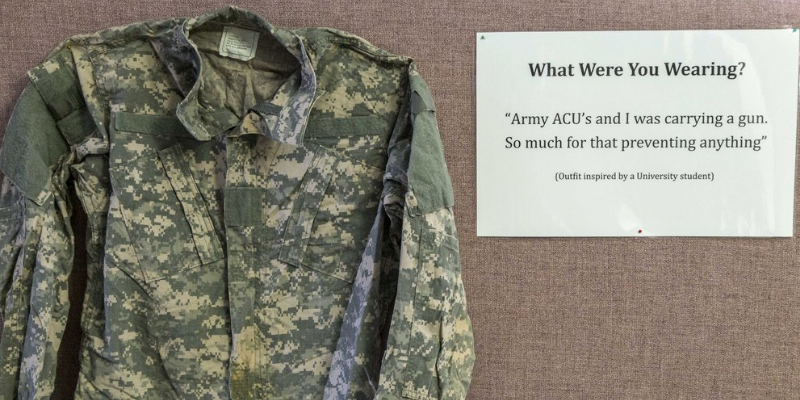Art, Socially
Art has a way of speaking where words fall silent. When involved in movements and messaging, it amplifies the voices of the individuals involved, ensuring the cause reaches a wider audience. It can also be a form of action that encourages unlearning, critiques concepts considered unquestionable, and actively initiates conversations where new learning occurs. Art can also be a story of resilience, it can be a means of fighting back, of sharing very personal narratives and a path that allows catharsis to the creator. The series of exhibitions called, “What Were You Wearing?” fulfils all of that and more. It is a call for accountability, from systems that have long been indifferent to the crisis of sexual assault, it is a demand for justice for all the survivors, and very importantly, it dismantles the abusive structures of power that result in shame and trauma for those who face assault. The exhibitions have also been part of a wider political campaign that resulted in the passing of two historic bills- one in the USA and another in the United Nations.
“What Were You Wearing?”: Jen Brockman and Dr. Mary Wyandt-Hiebert
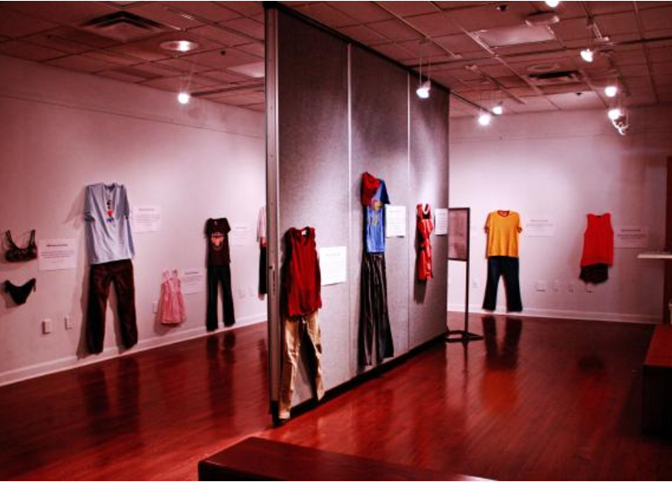
The earliest version of the project was instituted at the University of Arkansas in an effort to bring awareness to the rampant cases of sexual assault on campuses. Set up by Jen Brockman, the director of the Sexual Assault Prevention and Education Center at Kansas University with Dr. Mary Wyandt-Hiebert, director of STAR (Support, Training, Advocacy, & Resources on Sexual Assault and Relationship Violence) at the University of Arkansas, the project quickly became a very real portrayal of not injustice alone, but also blatant systemic issues. Inspired by “What I Was Wearing”, a poem by Dr. Mary Simmerling, the exhibition took the most frequently asked question after a rape or assault had taken place, seeking to answer it. The fundamental purpose behind the question is to place the onus on the victim, to convince them that they were somehow to blame for what occurred to them- hence, continue the cycle of shame, silence, and trauma. Brockman and Wyandt-Hiebert set up interviews with the survivors who came forward voluntarily to share their stories in private and reconstructed the outfits they were wearing at the time of the incident accurately. The exhibits featured sweatpants, tie-dye t-shirts, university sweaters, cheer uniforms, dresses, and a variety of other outfits. The goal was to destroy the commonplace assumption used in victim blaming and choosing to prove that assault can happen to anyone at any time irrespective of their choice of clothing. The exhibit was first displayed between March 31 – April 4th, 2014, and the initiative was taken up by many other institutions- including Baylor University. The exhibit itself has been toured and displayed in other venues.
“What Were You Wearing?”: Amanda Nguyen
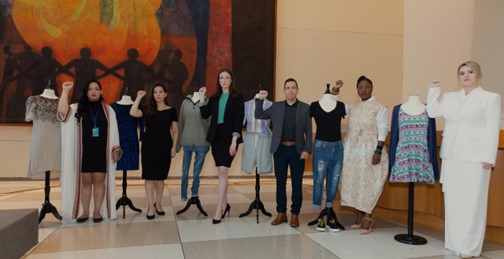
The core idea behind the project was also seen in the work done by activist Amanda Nguyen. Sexually assaulted at Harvard during her final year, Nguyen talks about the terribly flawed justice system. Her work especially focuses on the treatment of victims of sexual assault after the incident and the collection of evidence. Nguyen’s organization “Rise” teamed up with the “Spotlight initiative” to set up the first exhibition at the United Nations headquarters in New York City. Initially featuring only five outfits to represent different regions, the exhibition stands for victims of sexual assault. These five survivors have since come forward with their own stories, opting out of anonymity. The exhibition, as of July 2023, has grown to include 103 outfits, representative of 1.3 billion survivors around the world. “What Were You Wearing?” opened in Brussels in June this year and featured a wide variety of outfits, across age, gender, class, and other social demographics. The violence of sexual assault is a pervasive reality, and those who are on the receiving end of it, are not responsible for its perpetration in any manner. A fashion show, walked by survivors of sexual violence, happened at the MoMA during New York Fashion Week, with Nguyen at the helm. The event featured famous personas like Chanel Miller and Terry Crews, both survivors and active for the cause among others. Dressed in outfits of their choice, the aim was to reclaim the agency that is denied to them as survivors- due to the question, “What Were You Wearing?” and demanding they play society’s ideal victim, or else risk public backlash. Nguyen who wore a white Áo Dài in respect to her Vietnamese heritage, commented, “Tonight is about us reclaiming our power…We are multitudes.” (TIME) Her outfit had prints of the Survivors’ Bill of Rights- a result of her work, that helped reform the US legal system’s treatment of survivors.
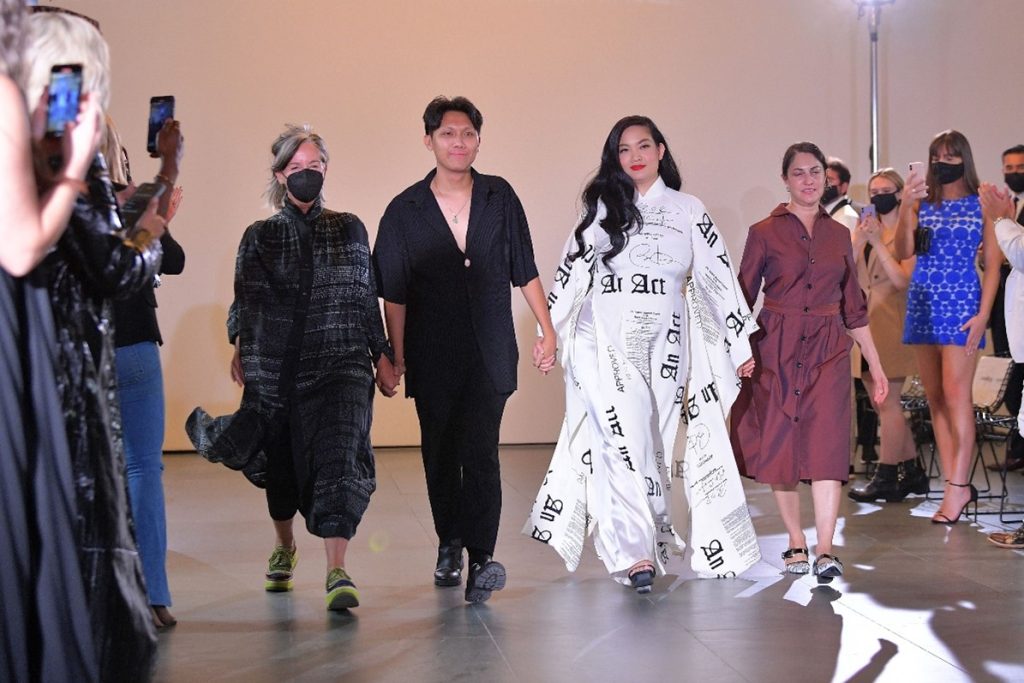
The Socio-Political Impact
The Survivors’ Bill of Rights was passed in October 2016 and one of the most significant changes it brought about was the protection of survivors and their medical examination post-assault. They shall no longer be charged for the exam and shall receive access to the result, among other provisions. At the end of a six-year-long struggle, Nguyen and her team were able to secure the recognition of rape during peacetime at the United Nations. The resolution was unanimously adopted by the General Assembly and shall act to protect the rights of survivors of sexual violence. Her exhibition did not only act as a testament but helped put the matter into perspective. Like those before her, the art empowered a group of people who are often shamed into silence- it is a piece of visibility, as much as it is of awareness and reach.
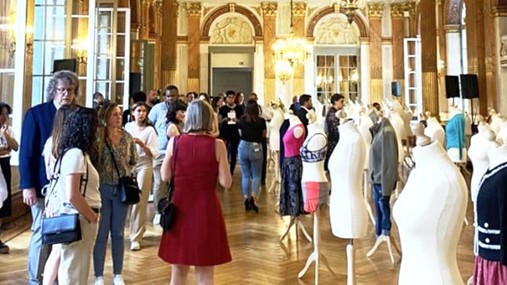
The work done by people like Nguyen, Brockman and Wyandt-Hiebert is perfect to illustrate that art is more than an aesthetic commodity. It is political, impactful, and important- when tied with social movements, it is capable of change. “What Were You Wearing?” functions not only as a social experiment but also acts as a call out something that stares society in the face when pointing out its deepest flaws, flaws that demand rectifying. They are representatives of voices mainstream media does not desire to hear about, and a means to have agency over their own narratives. Art is unapologetically human, the kind that is acutely self-aware of its conflicts and unafraid to face them.
SOURCES:
- What Were You Wearing? UN Exhibit Demands Justice for Survivors of Sexual Violence | Spotlight Initiative.
- Nguyen, Amanda. “The Next Step in the Fight to End Sexual Violence.” Time, 18 Sept. 2023
- Gupta, Alisha Haridasani. “A Fashion Show With an Unexpected Focus: Sexual Assault Survivors.” The New York Times, 14 Sept. 2021.
- United Nations. ““What Were You Wearing?”: Powerful Exhibition in Brussels Challenges Victim-blaming.” United Nations Western Europe, June 2023.
- Perry, Abby, and Abby Perry. ““What Were You Wearing?”: A Roving Campus Art Exhibit Addresses Misconceptions About Sexual Assault.” Texas Monthly, 27 Oct. 2022.
Read Also:

Contributor

